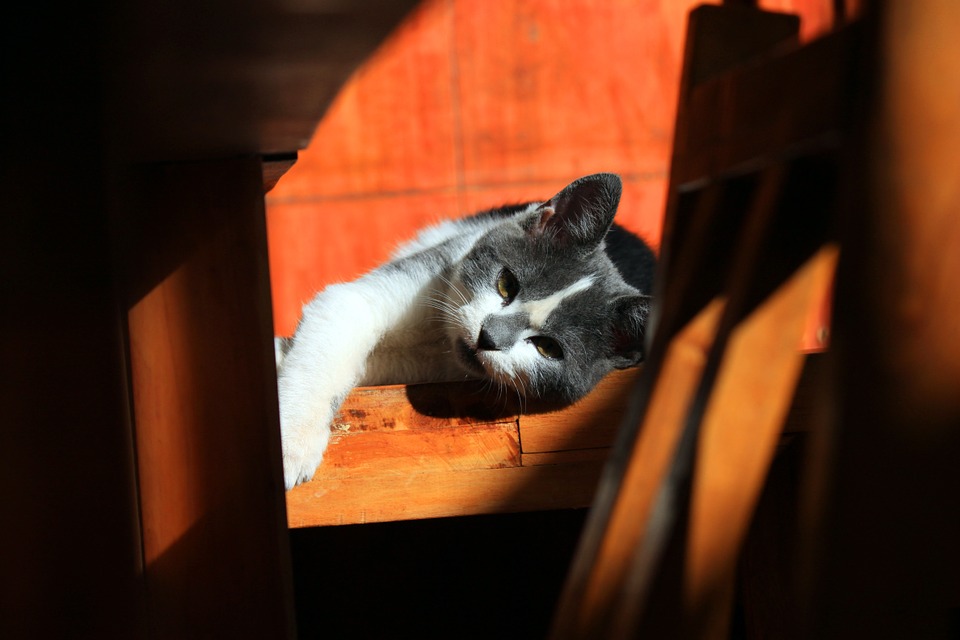Without a doubt, every cat owner has grappled with the decision whether to let their cat outside or not. Perhaps the main reason pet owners decide to let their cat out is due to the misconception that having a strictly indoor cat will lead to boredom, and denies them their natural instincts, such as hunting and climbing. The best way to make your decision as to whether your cat will be indoor or outdoor is to fully educate yourself on the risks and benefits of both lifestyles.
Issues surrounding outdoor cats:
Letting your cat outside obviously exposes them to many more dangers, such as infectious diseases, nasty parasites, cars and wild animals just to name a few. The risk of catching parasites such as fleas, ear mites, and intestinal parasites increases if your cat goes outdoors, especially if they love to hunt. Some of these parasites can be difficult to eradicate and may carry with them secondary health concerns. If your cat goes outside, they can bring these nasty bugs back indoors with them, with the potential of also infecting you and your family.
Outdoor cats are also more susceptible to catching an infectious disease. There are thousands of stray and feral cats in Canada, many of which carry harmful diseases that can be passed on to your cat. Feline leukemia virus, feline immunodeficiency virus and feline distemper are three very serious, potentially life threatening diseases, among many others. For this reason, it is important to keep your cat up to date on all vaccines and come in for an annual physical exam.
Other animals can pose a serious threat to outdoor cats – wildlife such as coyotes, raccoons and even eagles have been known to snatch up cats as a meal. Furthermore, dogs and other cats in the neighborhood can also present a danger. Cats can be very territorial; many cat fights result in a visit to the vet to treat an infected or abscessed bite wound. Some dogs love to chase cats, often running them out of their yard onto a street, causing them to become disoriented or feel trapped. If a cat gets spooked they may hide in a garage or up a tree where they could get stuck.
Toxins and poisons are another notable danger, ingestion of antifreeze or rat poison can be life threatening. Sadly, cats are often the subjects of horrible cruelty acts; they can be shot at with bb guns, trapped and abused or killed. With all of these risks in mind it is no surprise that the life expectancy of an outdoor cat is notably shorter than that of an indoor cat.
If you do decide to let your cat outside do your best to asses the neighborhood you live in. Are there a lot of other pets in the neighborhood? Is it a high traffic area? Consider as an alternative walking or letting your cat out on a harness and long leash in your yard. Try to keep your cat away from other animals in the neighborhood and keep them indoors when it is dark out and overnight. It’s also possible to train your cat to respond to a whistle or call, blow the whistle or call each time you feed your cat so they associate it with food.
How to help keep your indoor cat happy:
Many indoor cats, if not provided with proper environmental enrichment can become bored and frustrated, resulting in behavioral and health issues. It is important to make sure your cat has proper stimulation to keep them happy and healthy. There are many quick and easy steps you can take to ensure your indoor cat is kept happy – here are some tips to help keep your kitty content:
A Companion: Although cats can be territorial, they often benefit from having another 4 legged companion in the house, whether it is another cat or a dog. Playing, chasing, grooming, cuddling and snoozing together can often be very fulfilling, especially when you are away from the home.
Scratching/Climbing Posts: Cats have a natural instinct to scratch, climb, hide and perch. Luckily there are lots of different cat posts and trees that can provide hours of entertainment; Boxes or cat domes can satisfy their need to hide or bury. Ensure there are places your cat can perch and look out the window.
Playtime and Toys: There is an array of safe and fun cat toys on the market. Some that mimic the movement and feel of prey, some infused with cat nip, and even toys that dispense food. Be sure to spend time playing with your cat each day; encouraging your cat to engage is playful activity will also help to prevent obesity.
Plants: Having cat friendly plants such as catnip, wheat grass and oat grass are good for your cats to nibble and chew on. Not only do they provide health benefits, but also will deter your cat from chewing on other household plants.
There are definitely pro’s and con’s to both an indoor and an outdoor lifestyle for your cat. If you decide to let your cat outside ensure you take as many precautions as possible to keep them safe and away from dangers. If you keep your cat inside ensure they have a stimulating environment to keep them happy and healthy and fulfill their natural instinct

